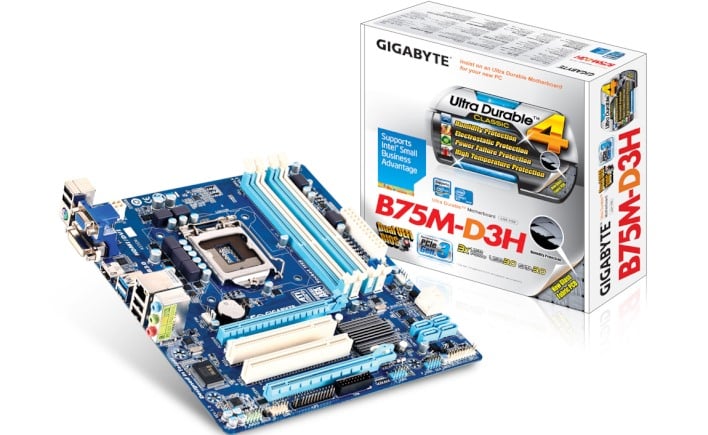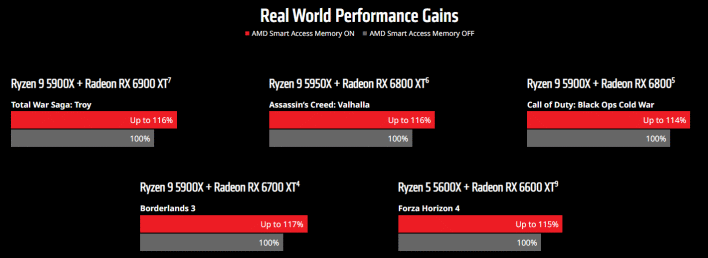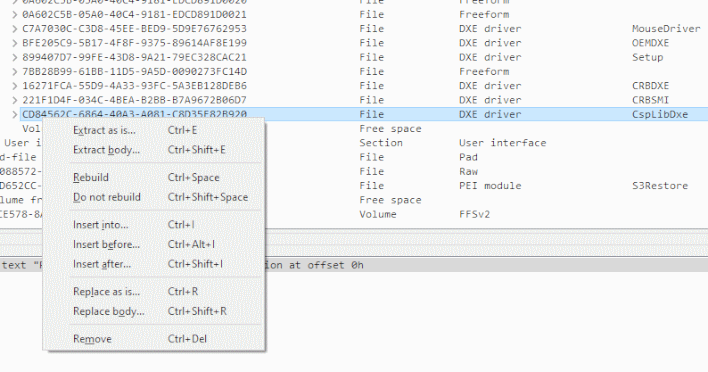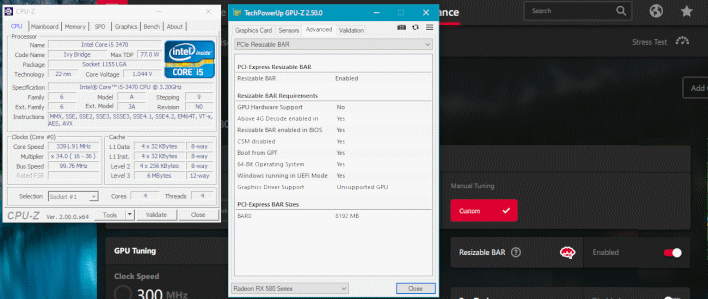It's Possible To Enable Resizable BAR On Unsupported Gaming PCs For An FPS Boost

Resizable BAR or ReBAR is a feature found on recent systems that allows the operating system (usually, the graphics driver) to configure the size of the PCIe Base Address Register (BAR). By increasing the size of the BAR, the "window" through which the GPU can access system RAM is widened, allowing for increased throughput when transferring data between the GPU and system memory. This, in turn, increases game performance, at least in theory.

In reality, the effects of enabling ReBAR are extremely variable, but with NVIDIA and AMD GPUs, it can be anywhere from a small penalty (a few percentage points) all the way up to a 20% gain in 1% low framerates. Generally speaking, it's usually a modest boost to gaming performance, particularly for AMD GPUs where it's known as "SmartAccess Memory". Meanwhile, Intel Arc graphics cards essentially require ReBAR to even function properly; without it, performance on those cards falls off a cliff.
The thing about ReBAR is that it requires support from every level of the software stack. Not only does your GPU driver need to support it, but the operating system and even your motherboard and GPU firmware need support. NVIDIA only started supporting it with the GeForce RTX 3000 "Ampere" family, and very few motherboard older than Intel 10th generation or AMD 400-series have support.
So, the patch we're looking at today has the potential to enable such support on older systems. The way it works is by installing a driver into the UEFI Driver Execution Environment (DXE) that patches the system firmware to enable ReBAR. So saying, your system does have to support and use UEFI boot for this to work, but other than that it seems like there aren't many other requirements.
Indeed, the list of confirmed working motherboards includes models from every major vendor and even a few minor ones, going back as far as the Gigabyte B75M-D3H, released in 2012. One user with that board patched his firmware and managed to enable an 8GB BAR size even though his Core i5-2500K CPU only supports PCI Express 2.0. The primary developer, known as xCuri0 on Github, says that his own machine with a Core i5-3570 and a Radeon RX 580 8GB, sees a 12% uplift in game performance with a 2GB ReBar enabled.

The process of patching your UEFI BIOS and enabling ReBAR support isn't particularly difficult, but there are numerous steps, so we won't go over it in detail here. If you're interested in trying this out for yourself, first make sure that your graphics card supports ReBAR to begin with. Officially, you'll need an NVIDIA RTX 3000 or RTX 4000 series card, a card with an AMD RDNA GPU (RX 5000 and later), or Intel Arc board.
However, if you're feeling particularly spicy, you can actually modify the AMD drivers or your motherboard's firmware to make ReBAR work on older cards, too, including NVIDIA RTX 2000 series. Check those links for information on how to do that, but keep in mind that we don't necessarily recommend doing any of this stuff, especially if you're not comfortable with it, as there is the potential to break things. In any case, to get started modding your BIOS, check this guide on Github.


